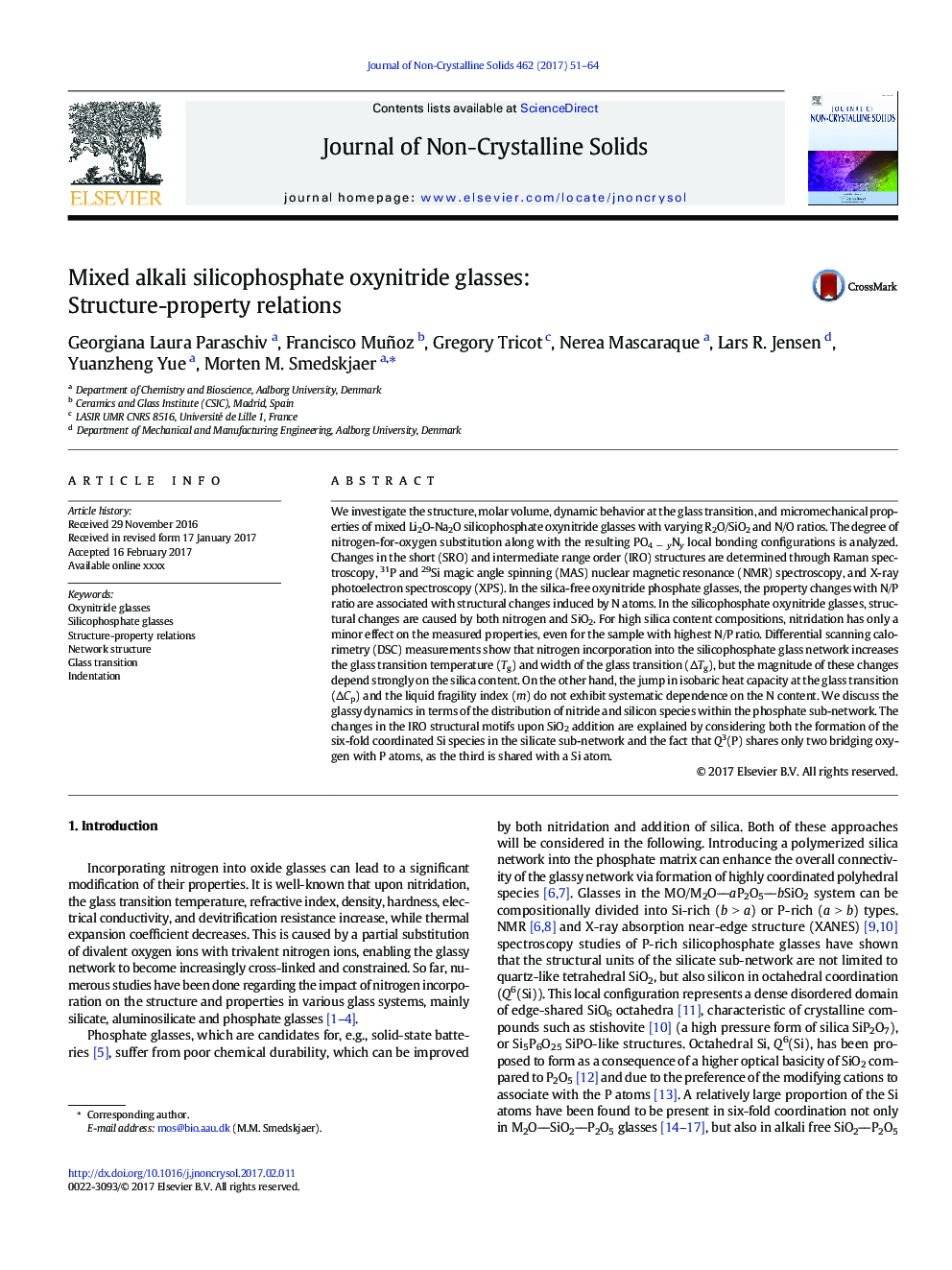| کد مقاله | کد نشریه | سال انتشار | مقاله انگلیسی | نسخه تمام متن |
|---|---|---|---|---|
| 5441290 | 1510384 | 2017 | 14 صفحه PDF | دانلود رایگان |
عنوان انگلیسی مقاله ISI
Mixed alkali silicophosphate oxynitride glasses: Structure-property relations
ترجمه فارسی عنوان
عینک اکسین نیترید سیلیکون فسفات قلیایی: ساختار-املاک روابط
دانلود مقاله + سفارش ترجمه
دانلود مقاله ISI انگلیسی
رایگان برای ایرانیان
کلمات کلیدی
عینک اکسینیتریت، عینک سیلیکون فسفات، ساختار و روابط مالکیت، ساختار شبکه، انتقال شیشه، انداختن،
موضوعات مرتبط
مهندسی و علوم پایه
مهندسی مواد
سرامیک و کامپوزیت
چکیده انگلیسی
We investigate the structure, molar volume, dynamic behavior at the glass transition, and micromechanical properties of mixed Li2O-Na2O silicophosphate oxynitride glasses with varying R2O/SiO2 and N/O ratios. The degree of nitrogen-for-oxygen substitution along with the resulting PO4 â yNy local bonding configurations is analyzed. Changes in the short (SRO) and intermediate range order (IRO) structures are determined through Raman spectroscopy, 31P and 29Si magic angle spinning (MAS) nuclear magnetic resonance (NMR) spectroscopy, and X-ray photoelectron spectroscopy (XPS). In the silica-free oxynitride phosphate glasses, the property changes with N/P ratio are associated with structural changes induced by N atoms. In the silicophosphate oxynitride glasses, structural changes are caused by both nitrogen and SiO2. For high silica content compositions, nitridation has only a minor effect on the measured properties, even for the sample with highest N/P ratio. Differential scanning calorimetry (DSC) measurements show that nitrogen incorporation into the silicophosphate glass network increases the glass transition temperature (Tg) and width of the glass transition (ÎTg), but the magnitude of these changes depend strongly on the silica content. On the other hand, the jump in isobaric heat capacity at the glass transition (ÎCp) and the liquid fragility index (m) do not exhibit systematic dependence on the N content. We discuss the glassy dynamics in terms of the distribution of nitride and silicon species within the phosphate sub-network. The changes in the IRO structural motifs upon SiO2 addition are explained by considering both the formation of the six-fold coordinated Si species in the silicate sub-network and the fact that Q3(P) shares only two bridging oxygen with P atoms, as the third is shared with a Si atom.
ناشر
Database: Elsevier - ScienceDirect (ساینس دایرکت)
Journal: Journal of Non-Crystalline Solids - Volume 462, 15 April 2017, Pages 51-64
Journal: Journal of Non-Crystalline Solids - Volume 462, 15 April 2017, Pages 51-64
نویسندگان
Georgiana Laura Paraschiv, Francisco Muñoz, Gregory Tricot, Nerea Mascaraque, Lars R. Jensen, Yuanzheng Yue, Morten M. Smedskjaer,
